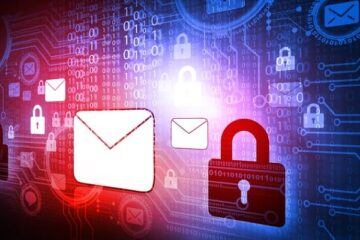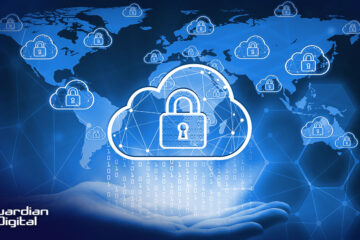Hey there, have you heard about Gartner’s latest unveiling of the top 10 strategic technology trends for 2025 at IT Symposium/Xpo 2024? These trends include advancements in AI and computing paradigm shifts that are sure to shake things up and provide exciting opportunities for CIOs and IT leaders in the next decade. But with great innovation comes great responsibility, as these new technologies also bring new security risks that organizations need to tackle head-on.
Today, I want to dive into these trends and explore their cybersecurity implications for businesses, CIOs, and IT administrators. I’ll also share some practical advice to help you prepare for these emerging technologies and strengthen your cybersecurity defenses as we head into 2025.
Agentic AI
Let’s talk about Agentic AI – autonomous systems that plan and execute actions to meet user-specified goals. By 2028, Gartner predicts that these agents will handle at least 15% of day-to-day work decisions. While this promises augmented human work productivity, it also raises security concerns, as hackers could potentially exploit compromised systems for malicious purposes like data breaches.
One area of concern is email security threats evolving to involve autonomous AI systems handling email tasks. To mitigate these risks, strong multi-factor authentication access and regular audits to monitor behavior and detect anomalies are crucial steps.
AI Governance Platforms
AI governance platforms play a crucial role in overseeing the legal, ethical, and operational performance of AI systems. Gartner’s AI Trust, Risk, and Security Management (TRiSM) framework includes these platforms. Organizations with comprehensive AI governance systems are predicted to experience 40% fewer AI-related ethical incidents by 2028.
It’s essential for enterprises to establish policies that explain how AI-powered email systems operate and increase transparency to build trust among employees and customers. Implementing AI governance frameworks will enable organizations to deploy Agentic AI ethically and safely.
Disinformation Security
Disinformation security focuses on maintaining the integrity and authenticity of information to prevent impersonation and track the spread of harmful content. By 2028, Gartner estimates that 50% of enterprises will adopt products explicitly designed to address disinformation security.
Email remains a common medium for disinformation attacks like phishing and social engineering. Implementing advanced email filtering and verification systems as part of a comprehensive cloud email security solution can help identify and counteract these threats effectively.
Postquantum Cryptography
Postquantum cryptography offers data protection resistant to quantum computing decryption threats, making conventional cryptographic methods potentially unsafe by 2029.
Organizations need to prepare for this transition by auditing their cryptographic assets and considering the implementation of quantum-resistant algorithms. Ensuring secure encrypted communication is vital to safeguard data confidentiality and integrity in a post-quantum era.
Ambient Invisible Intelligence
Ambient invisible intelligence involves low-cost sensors that enable real-time tracking and sensing capabilities. By 2027, these technologies are expected to enhance visibility and efficiency in industries like retail and logistics.
These sensors can significantly impact an organization’s email security posture, as the data they gather may eventually be transmitted via email systems. Robust measures against unauthorized data access are essential.
Energy-Efficient Computing
Energy-efficient computing aims to minimize the carbon footprint associated with compute-intensive applications. Technologies like optical and neuromorphic computing offer energy-efficient solutions for specific tasks.
Transitioning to energy-efficient computing infrastructures requires careful deployment and monitoring to ensure secure usage. Conducting in-depth security assessments to identify vulnerabilities is crucial before adopting these new technologies.
Hybrid Computing
Hybrid computing combines various computing paradigms to address complex problems efficiently. However, this complexity presents new security challenges that organizations must address to ensure the safety of their hybrid computing environments.
Beware of Hybrid Computing Challenges!
Organizations must secure data exchange between hybrid computing platforms and traditional IT infrastructure, especially for email systems. Robust encryption and access controls are vital for maintaining security in hybrid computing environments.
Spatial Computing
Spatial computing enhances physical reality through augmented and virtual experiences, creating seamless interactions between the physical and digital worlds. This technology is expected to see exponential growth in the coming years.
Protecting emails used to transmit spatial computing data is crucial to prevent unauthorized access and tampering. Implementing data transfer protocols and educating users on safe email practices are key to ensuring the security of spatial computing data.
Polyfunctional Robots
Polyfunctional robots can perform various tasks and operate in human environments, offering efficiency and quick returns on investments. By 2030, smart robots are projected to interact daily with 80% of humans.
As these robots communicate and exchange data via email systems, ensuring secure communications is essential. Implementing end-to-end encryption and limiting access to authorized personnel can help protect against cyber threats.
Neurological Enhancement
Neurological enhancement technologies aim to boost cognitive abilities by decoding brain activity, potentially revolutionizing upskilling and marketing. However, the data generated and transmitted by these technologies requires stringent protection to safeguard personal and sensitive information.
Organizations must implement robust data protection policies and encryption protocols to secure emails transmitting data from neurological enhancement technologies.
Stay Informed About 2025 Cybersecurity Trends & Strategies
Gene Alvarez, Distinguished VP Analyst at Gartner, emphasizes the importance of tracking these trends to shape the future responsibly and ethically. As we move towards 2025, leveraging strategic technology trends and robust security measures is crucial for maintaining an innovative yet secure digital environment. At Guardian Digital, we share this commitment!
Keep learning about strengthening your email security for the upcoming year by exploring the resources below:



